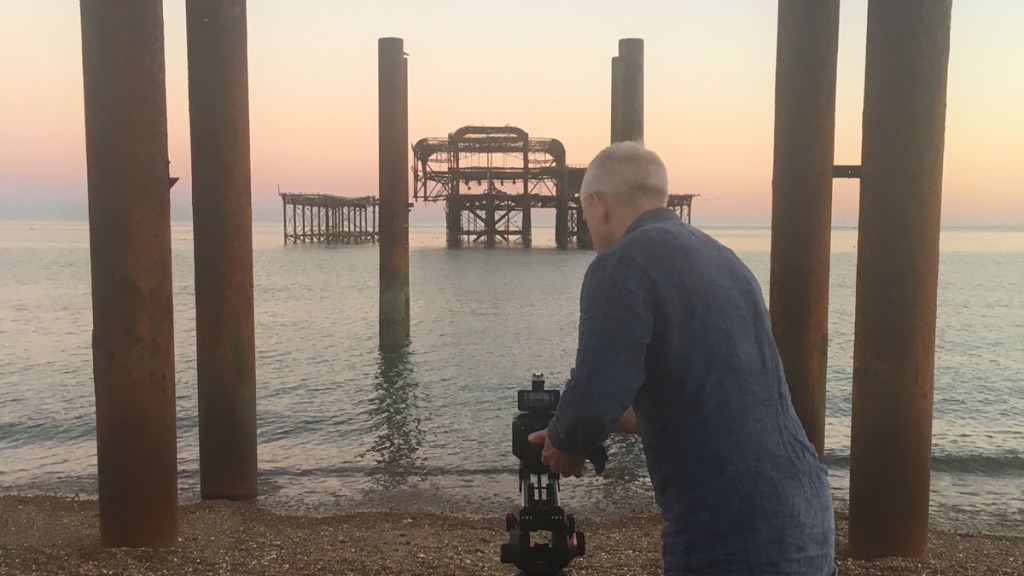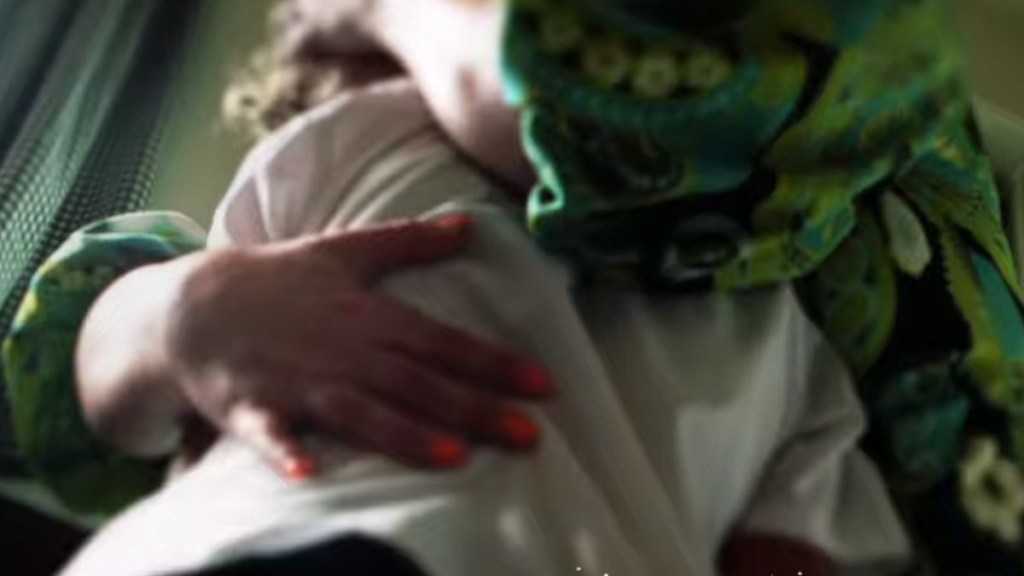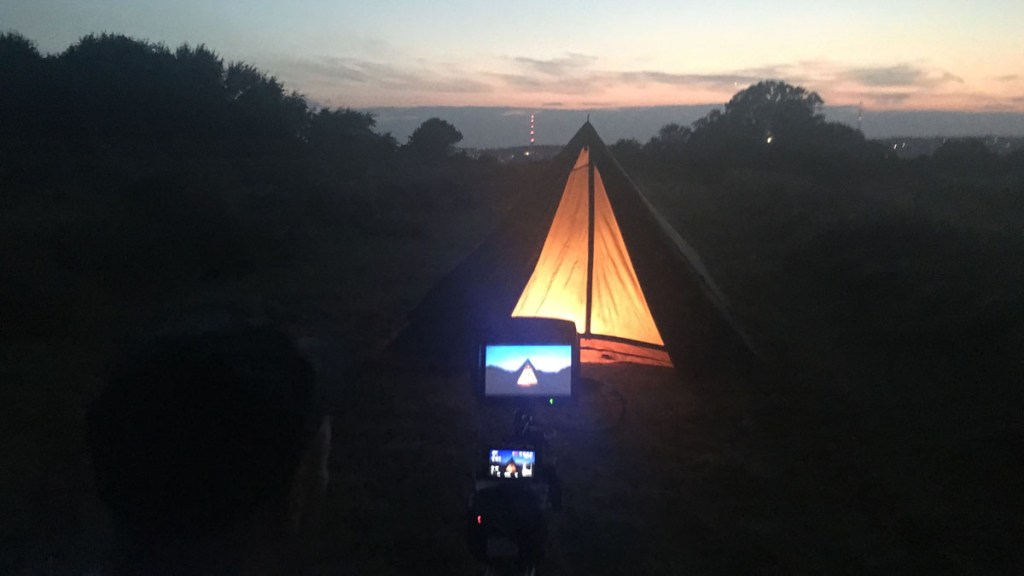Unforgotten: the Clues in the Titles and Why Every Detail Matters
The title sequences for each series of ITV’s Unforgotten are carefully constructed to contain major clues and character-forming memories

Warning: contains spoilers for Unforgotten series 1-3
“You’d be surprised,” says Peter Anderson, creative director of the studio behind the title sequences for hit ITV crime drama Unforgotten. “You can show something really on-the-nose, and people won’t get it until they’ve been told. We fret and worry about giving too much away but the clue is only triggered when you know the context.”
Each 40-second title sequence for Unforgotten is a curated collection of purpose-filmed scenes designed to go where the drama can’t – namely, inside the characters’ heads. Every series starts with the discovery of a long-buried body, then introduces viewers to a guest cast of characters whose connections to each other, and to the historical murder, gradually unfold. It takes six episodes to solve the mystery, but right from the start, the abstracted and symbolic images created for the title sequence already hold all the answers.
“Some of the images are big clues,” explains Anderson. “With the current series titles, there were some things that were taken out and then went back in, that are incredibly poignant, really incredibly amazing clues, I can only be ambiguous about it at this stage.”
How the series four title sequence relates to the new story, airing on Mondays at 9pm, is currently anybody’s guess. The meaning behind its images – a smashed car window, an allotment, a discarded fountain pen, to pick just three – will only become apparent after the finale. “You should have a relationship with the title sequence that grows as the drama grows,” says Anderson. Look back the title sequences for previous Unforgotten series and that’s exactly so – they’re transformed by hindsight.
Take the series two montage, which opens with a shot of a pub table and three empty drinking glasses. Atmospherically, it’s a lonely image, but hardly ominous. In the finale, the scene is revealed to be a turning point in the investigation as the place where the murder suspects gather and the truth is finally told. It’s a terrible truth about three lives irreparably damaged by childhood sexual abuse, and provides the answer to another title sequence mystery. The dreadful significance of a previously unexplained shot of an empty yellow tent is made clear in a heart-rending monologue from Mark Bonnar, who plays lawyer Colin. The abuse Colin suffered as a child began aged nine, on a camping trip. Each week, viewers have been shown the tent from his memory – a formative moment that haunts the titles in the same way it haunts the character.
“That’s one of those occasions where the titles are showing you something awful and poignant, a game-changer,” says Anderson. “In a way, the tent is the scene that forms the whole story of the drama, but it’s in the titles. It’s not a flashback, it’s been allowed to be in this other place, this place that says to you, ‘Before you watch this drama every week, think about some of these things’.”

Not every image is necessarily a clue. “Some of them are setting the scene, some of them are memories that form the characters, some of them are about placing the different time zones that you’re in.” Unforgotten is a time-travelling series, says Anderson. “The titles are showing us that we will be in memory.”
All four series titles share the visual metaphor of unsettled dust motes floating from scene to scene. “It’s talking about how, the moment Cassie and Sunny (the show’s detective leads played by Nicola Walker and Sanjeev Bhaskar) come knocking on your door with news or an accusation, it unearths a whole series of events, whether you’re innocent or guilty. The dust, your past, is unsettled. That thread follows through all the title sequences, it’s about the everyday becoming disrupted and changed.”
Clues and reminiscences are purposely blended in the Unforgotten titles. Some memories may be more important than others, but nothing is frivolous, says Anderson. In the series two sequence, even a glimpsed pan of peas boiling on a stove feeds into the working class roots of a now wealthy, knighted business tsar. “Even the peas have a job to do because they’re taking you back inside the head of a character.”
“One that pops to mind is a car crash scene from the series one titles. It’s the moment that one of our characters was in the crash that put him in his wheelchair. That’s not something shown in the drama, but that’s a moment that formed that character, a lot of his traits come out of this awful thing that happened.”
Title scenes are a different type of narrative that hark back to the silent movie era, Anderson explains. “It’s about subtly extending the storytelling, extending the characters through their memories, taking you to a place that formed them that the drama doesn’t have the time to show. It might be referred to in dialogue, but we can actually make it in the titles.”
They can make it, but not wanting to give the game away, they also have to obscure it. “Something that seems abstract often is laced with meaning,” he says, citing a tiny snippet in the series three credits where we see a close-up of a deer’s eye. The deer turns out to be a plot point, as the animal hit by an underage driver whose father suspects him of having killed the victim. In the same sequence, a poetic scene shows grass and flowing water. “To the viewer that will just be abstract and atmospheric, but actually, that’s the moment when the river broke its banks and carried away the body.”
The Unforgotten titles incorporate the settings used in the show, but – until this series because of last year’s Covid-19 restrictions on set visits – were always purpose-filmed by Anderson’s studio and not compiled from existing footage. They’d pop in to a set while the production was on lunch and get the coverage they needed, borrowing key props and costumes. That’s how a necktie worn by a character revealed to have a sadomasochistic fetish is glimpsed binding the hands of a young woman (a Peter Anderson Studios intern, being useful on her first day) in the series two sequence. A suitcase used to contain and dispose of a murder victim is spotted sitting innocently at the bottom of a wardrobe. “We have access to all the costumes, the props, the poignant clues from the drama itself. The detail that’s in there comes direct from the drama.”

Each Unforgotten title sequence begins life as around 100 short scenes written by Anderson after reading all six of that series’ scripts. It’s unusual to be granted such breadth of access in TV drama, which is part of what makes the title work on Unforgotten so special. The entire Mainstreet Pictures team, from creator and writer Chris Lang to the producers and directors, collaborate on whittling down the list of scenes until they say everything they need to, without giving anything away.
This kind of devotion from a production company to a TV title sequence is rare in the UK, says Anderson. He’s experienced it precious few times in his career: with Neil Gaiman creating the stunning 2D animated titles for Good Omens, with Steven Moffat and the producers of BBC One’s Sherlock and Doctor Who – for which his studio made the series seven titles starring Matt Smith – and here, on Unforgotten.
Lang tells Den of Geek that he’s never worked on a series with such a symbiosis between the titles and the drama. “We meet at late script stage, when the characters are fully formed, and then we decide together which echoes, teases and clues we want to put in to the opening sequence.” Lang describes the titles for each series as a mini drama of their own, easing the audience into the world of the show. In dramatic and storytelling terms, he says, the titles do a lot of heavy lifting.
“Chris will say ‘Can we add this scene? Because this is why that character was formed’, explains Anderson. “I can’t extend a character’s story in the way that the writer can. He knows implicitly how he’s formed his characters, he knows their past. He knows which memories are important”. It’s about understanding the detail of every bit of storytelling, “that even a half-second snippet really matters.”

One character-forming scene that’s only a half-second snippet in the series three titles shows a young child being hugged by a woman. The costume, backdrop and lighting suggest the 1960s, putting us in the realm of memory. In that half-second, Anderson confirms, we’re inside the mind of Dr Tim Finch, an extremely damaged man played by Alex Jennings. “It’s just meant to be a flicker of time showing an overbearing mother that formed part of his character. If you look at the detail of that shot, what’s important is the fact that he’s being smothered and the smothering therefore has a psychological effect on him growing up.”
Another key memory scene – a child’s-eye perspective of a woman peeling potatoes at a sink, which relates to the moment a character told her mother she was being abused by her father – was coincidentally filmed in the same location: Anderson’s kitchen at home. “I have a 1950s house with a genuine 50s kitchen with a genuine 80s wall with a genuine 70s floor, so as a location, it’s utterly fantastic for time travel,” he laughs, angling his laptop camera down to show a tiled floor fans will recognise from several of the Unforgotten title sequences.
In the US, Anderson explains, TV titles are highly paid for, but in Britain it remains a lo-fi business. When his studio created the fast-paced title sequence for high-profile Sky One drama Lucky Man, for instance, instead of closing the roads and wiring up a street with cables to film the fast-paced street scenes, they did it using an actor from Starlight Express roller skating through London wearing a GoPro.

Series two’s yellow tent scene was filmed using vintage camping equipment pitched in the park next to Anderson’s home. “That was me and a cinematographer on the side of a hill. We set it up meticulously with an oil lamp from the period. We wanted the light to be perfect, so for just that one scene we probably spent between three and four hours shooting.”
A television drama often won’t have the time to be so indulgent with its photography, he says. For the series three titles, his studio shot the bridge to Bristol in the early hours of the morning, starting off in the dark and the snow, waiting until the light was just so. Production arranged the official permissions, the hotel, everything so that Anderson’s team could film just two scenes of no more than a few seconds each. It’s proof, he says, of how much everybody involved cares and how every detail matters – something well worth remembering the next time your finger hovers over that ‘Skip Intro’ button.
Unforgotten series 4 continues on Mondays at 9pm on ITV1.
